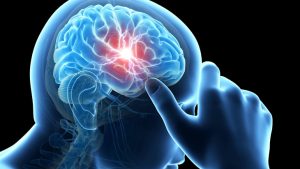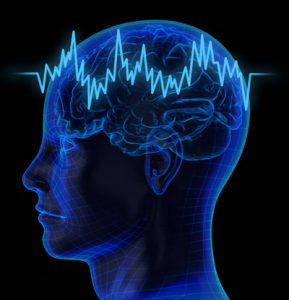Creutzfeldt-Jakob disease (CJD)
New detection method could lead to noninvasive diagnosis of Creutzfeldt-Jakob disease
Published on December 22, 2016 at 6:37 AM
The detection of prions in the blood of patients with variant Creutzfeldt-Jakob disease could lead to a noninvasive diagnosis prior to symptoms and a way to identify prion contamination of the donated blood supply, according to researchers at McGovern Medical School at The University of Texas Health Science Center at Houston (UTHealth).
The results of the research, led by senior author Claudio Soto, M.D., professor in the Department of Neurology and the director of the George and Cynthia Mitchell Center for Alzheimer’s disease and Related Brain Disorders at UTHealth, were published today in Science Translational Medicine, a journal of the American Association for the Advancement of Science. First author of the paper is Luis Concha-Marambio, senior research assistant in the Department of Neurology at McGovern Medical School.
“Our findings, which need to be confirmed in further studies, suggest that our method of detection could be useful for the noninvasive diagnosis of this disease in pre-symptomatic individuals,” Soto said. “Early diagnosis would allow any potential therapy to be given before substantial brain damage has occurred. In the case of the blood supply, availability of a procedure to efficiently detect small quantities of the infectious agent would allow removal of blood units contaminated with prions, so that new cases can be minimized substantially.”
Human prion diseases are infectious and invariably fatal neurodegenerative diseases. They include sporadic Creutzfeldt-Jakob disease (sCJD), the most common form, and variant Creutzfeldt-Jakob disease (vCJD), which is caused by the transmission of bovine spongiform encephalopathy – commonly known as mad cow disease – from infected cattle to humans.
Since 1990, 178 people in the United Kingdom have died from vCJD, according to the National CJD Research & Surveillance Unit at the University of Edinburgh. The disease has claimed an additional 49 people worldwide, including four United States residents, according to the European Centre for Disease Prevention and Control. In a handful of cases, the disease was spread through the donated blood supply.
The disease can lay silent in the body for decades as damage slowly builds in the brain from the misfolded infectious proteins called prions. On average, people infected with vCJD die two years after the development of the first symptoms, which can include psychiatric alterations such as depression, anxiety and hallucinations that progress to more severe dementia, muscle contractions and loss of coordination.
Soto’s team analyzed blood samples from 14 cases of vCJD and 153 controls, which included patients affected by sCJD and other neurodegenerative or neurological disorders as well as healthy subjects. To detect the prions, the team used a protein misfolding cyclic amplification assay, invented in Soto’s lab, which mimics the prion replication process in vitro that occurs in prion disease.
The results showed that prions could be detected with 100 percent sensitivity and specificity in blood samples from vCJD patients.
The new study builds on years of research by Soto’s team, whose detection of prions in urine was published in the New England Journal of Medicine in August 2014. In June of this year, Soto received $11 million from the National Institute of Allergy and Infectious Diseases, part of the National Institutes of Health, to study the pathogenesis, transmission and detection of prion diseases including chronic wasting disease in deer.
Source:
University of Texas Health Science Center at Houston
Creutzfeldt-Jakob disease
- Overview
- Clinical trials
- Creutzfeldt-Jakob disease
- Symptoms
- Causes
- Diagnosis
- Treatment
- Prevention
Creutzfeldt-Jakob disease (CJD) is a rare and fatal condition that affects the brain. It causes brain damage that worsens rapidly over time.
This page covers:
Variant CJD compensation scheme
Symptoms of CJD
Symptoms of CJD include:
- loss of intellect and memory
- change in personality
- loss of balance and co-ordination
- slurred speech
- vision problems and blindness
- abnormal jerking movements
- progressive loss of brain function and mobility
Most people with CJD will die within a year of the symptoms starting, usually from infection. This is because the immobility caused by CJD can make people with the condition vulnerable to infection.
Read more about the symptoms of Creutzfeldt-Jakob disease and diagnosing Creutzfeldt-Jakob disease.
What causes CJD?
CJD appears to be caused by an abnormal infectious protein called a prion. These prions accumulate at high levels in the brain and cause irreversible damage to nerve cells, resulting in the symptoms described above.
While the abnormal prions are technically infectious, they’re very different to viruses and bacteria. For example, prions aren’t destroyed by the extremes of heat and radiation used to kill bacteria and viruses, and antibiotics or antiviral medicines have no effect on them.
Read more about the causes of Creutzfeldt-Jakob disease.
Types of CJD
There are four main types of CJD, which are described below.
Sporadic CJD
Sporadic CJD is the most common type.
The precise cause of sporadic CJD is unclear, but it’s been suggested that a normal brain protein changes abnormally (‘misfolds’) and turns into a prion.
Most cases of sporadic CJD occur in adults aged between 45 and 75. On average, symptoms develop at age 60-65 years.
Despite being the most common type of CJD, sporadic CJD is still very rare, affecting only one or two people in every million each year in the UK.
In the UK during 2014, there were 90 recorded deaths from sporadic CJD.
Variant CJD
Variant CJD is likely to be caused by consuming meat from a cow that had bovine spongiform encephalopathy (BSE or ‘mad cow disease’), a similar prion disease to CJD.
Since the link between variant CJD and BSE was discovered in 1996, strict controls have proved very effective in preventing meat from infected cattle from entering the food chain (see preventing Creutzfeldt-Jakob disease for more information).
However, the average time it takes for the symptoms of variant CJD to occur after initial infection (the incubation period) is still unclear. The incubation period could be very long (over 10 years) in some people, so those exposed to infected meat before the food controls were introduced can still develop variant CJD.
The prion that causes variant CJD can also be transmitted by blood transfusion, although this has only happened four times in the UK.
In the UK during 2014, there were no recorded deaths from variant CJD.
Familial or inherited CJD
Familial CJD is a very rare genetic condition where one of the genes a person inherits from their parent (the prion protein gene) carries a mutation that causes prions to form in their brain during adulthood, triggering the symptoms of CJD. It affects about 1 in every 9 million people in the UK.
The symptoms of familial CJD usually first develop in the early 50s.
In the UK during 2014, there were 10 deaths from familial CJD and similar inherited prion diseases.
Iatrogenic CJD
Iatrogenic CJD is where the infection is accidentally spread from someone with CJD through medical or surgical treatment.
For example, a common cause of iatrogenic CJD in the past was growth hormone treatment using human pituitary growth hormones extracted from deceased individuals, some of whom were infected with CJD. Synthetic versions of human growth hormone have been used since 1985, so this is no longer a risk.
Iatrogenic CJD can also occur if instruments used during brain surgery on a person with CJD aren’t properly cleaned between each surgical procedure and are re-used on another person. However, increased awareness of these risks means iatrogenic CJD is now very rare.
In the UK during 2014, there were three deaths from iatrogenic CJD (caused by receiving human growth hormone before 1985).
How CJD is treated
There’s currently no cure for CJD, so treatment aims to relieve symptoms and make the affected person feel as comfortable as possible.
This can include using medication such as antidepressants to help with anxiety and depression, and painkillers to relieve pain. Some people will need nursing care and assistance with feeding.
Read more about treating Creutzfeldt-Jakob disease.
Variant CJD compensation scheme
In October 2001, the government announced a compensation scheme for UK victims of variant CJD. A trust fund was set up in April 2001 and payments of £25,000 were made available to most affected families.
National Congenital Anomaly and Rare Diseases Registration Service
If you have CJD, your clinical team will pass information about you on to the National Congenital Anomaly and Rare Diseases Registration Service (NCARDRS).
This helps scientists look for better ways to prevent and treat CJD. You can opt out of the register at any time.
Page last reviewed: 21/07/2015
Next review due: 01/07/2018




